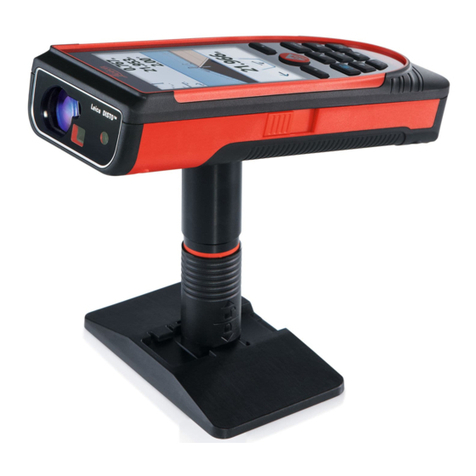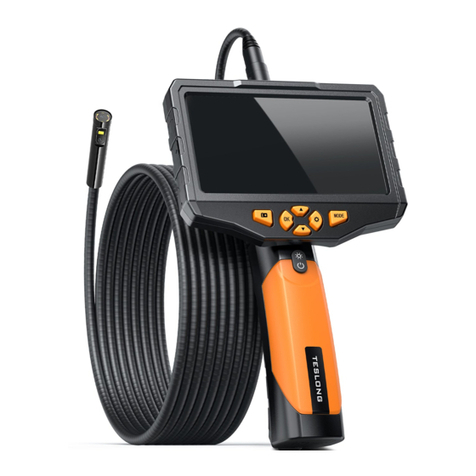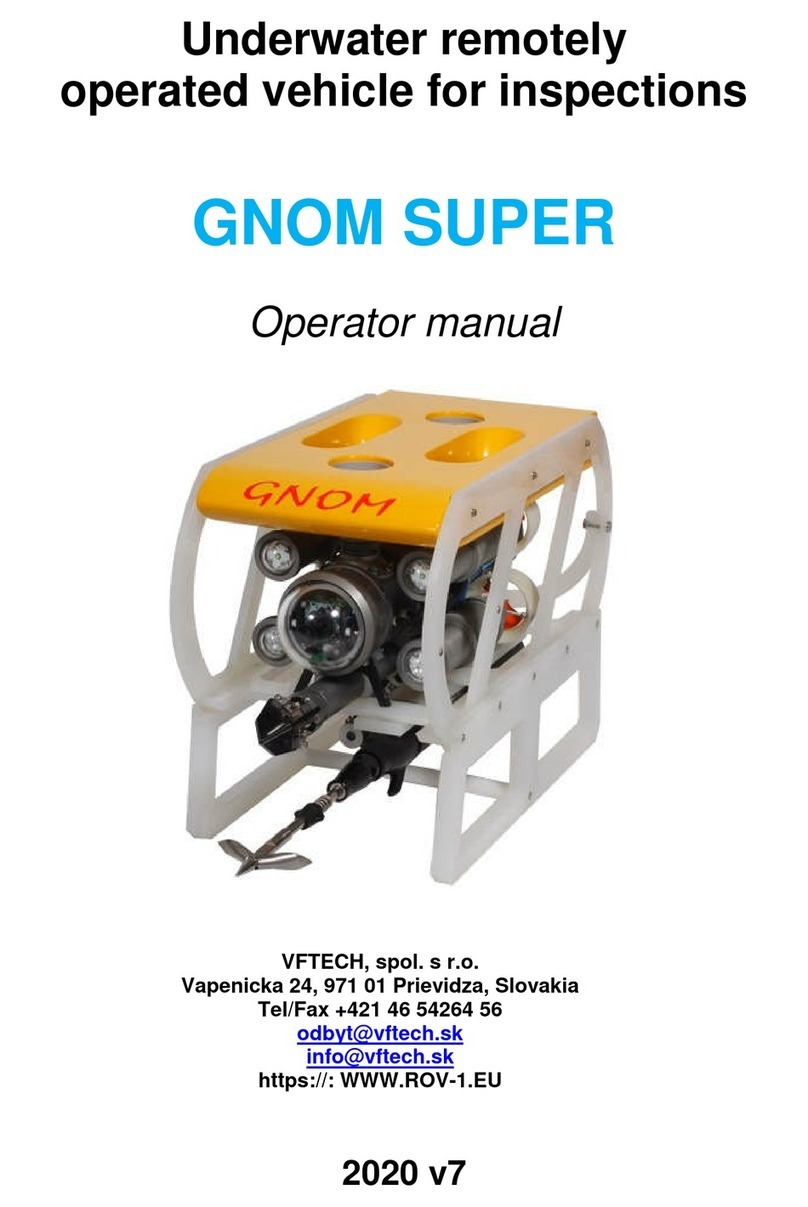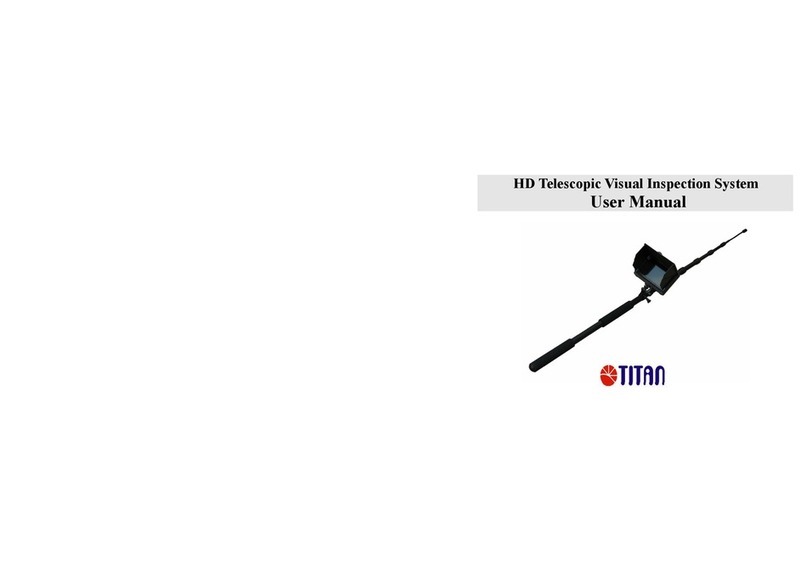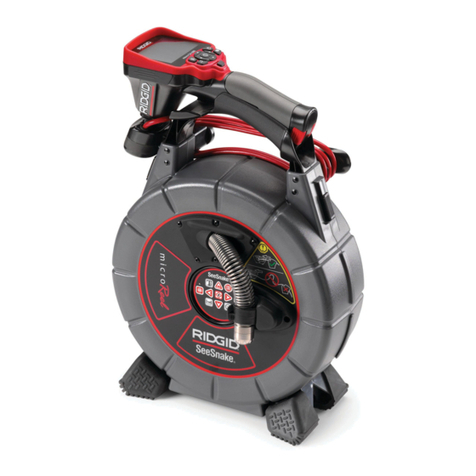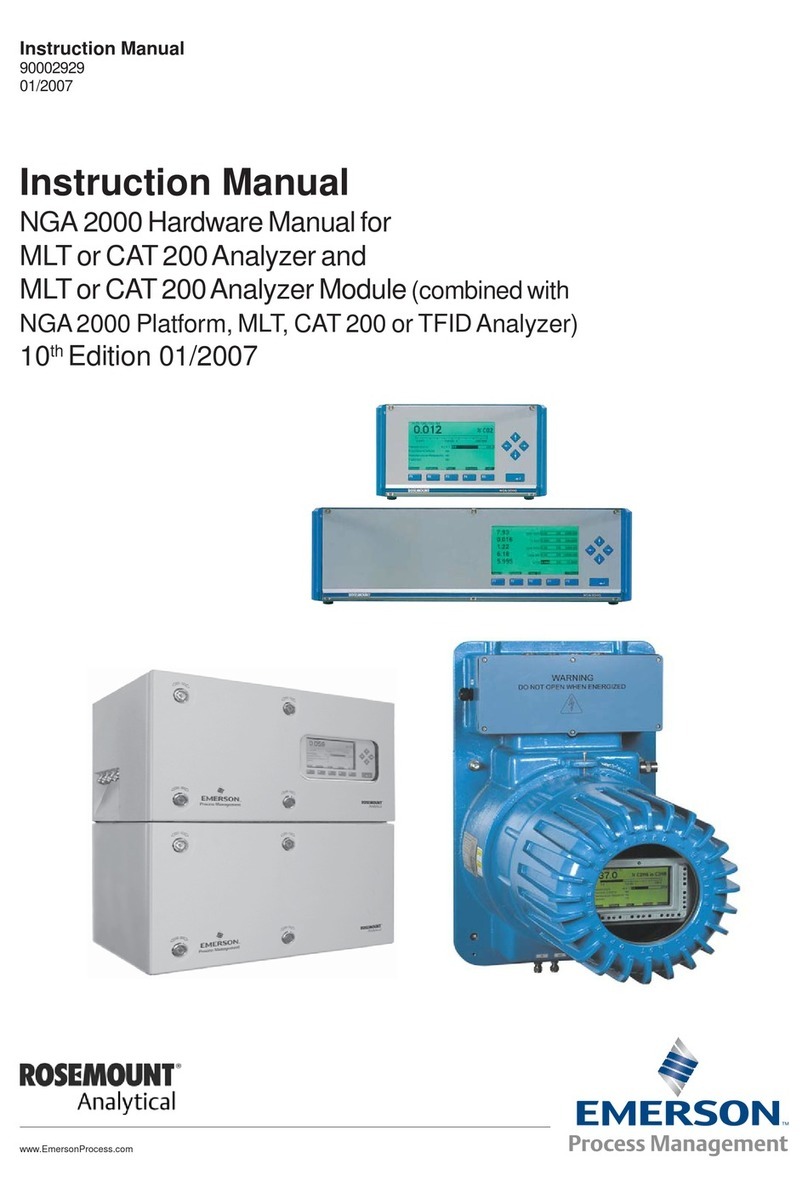Acuity AR2000 Series User manual

Acuity AR2000 Series
Laser Distance Meters
Operation and Specification Manual
LLL002001 Rev. 3.2

A Product Line of Schmitt Industries, Inc.
Limited Use License Agreement
CAREFULLY READ THE FOLLOWING TERMS AND CONDITIONS BEFORE OPENING THE PACKAGE
CONTAINING THE PRODUCT AND EPROM SOFTWARE. CONNECTING POWER TO THE PRODUCT
INDICATES YOUR ACCEPTANCE OF THESE TERMS AND CONDITIONS. IF YOU DO NOT AGREE WITH
THE TERMS AND CONDITIONS, PROMPTLY RETURN THE UNIT WITH POWER SEAL INTACT TO THE
DEALER FROM WHOM YOU PURCHASED THE PRODUCT WITHIN FIFTEEN DAYS FROM DATE OF
PURCHASE AND YOUR PURCHASE PRICE WILL BE REFUNDED BY THE DEALER. IF THE DEALER FAILS
TO REFUND YOUR PURCHASE PRICE, CONTACT SCHMITT INDUSTRIES, INC. IMMEDIATELY AT THE
ADDRESS FOLLOWING CONCERNING RETURN ARRANGEMENTS.
SCHMITT INDUSTRIES, INC. PROVIDES THE HARDWARE CONTAINED IN THE UNIT. SCHMITT
INDUSTRIES, INC. HAS A VALUABLE PROPRIETARY INTEREST IN SUCH SOFTWARE AND RELATED
DOCUMENTATION ("SOFTWARE”), AND LICENSES THE USE OF THE SOFTWARE TO YOU PURSUANT
TO THE FOLLOWING TERMS AND CONDITIONS. YOU ASSUME RESPONSIBILITY FOR THE SELECTION
OF THE PRODUCT SUITED TO ACHIEVE YOUR INTENDED RESULTS, AND FOR THE INSTALLATION, USE
AND RESULTS OBTAINED.
License Terms And Conditions
a. You are granted a non-exclusive, perpetual license to use the Software solely on and
in conjunction with the product. You agree that the Software title remains with Schmitt
Industries, Inc. at all times.
b. You and your employees and agents agree to protect the confidentiality of the
Software. You may not distribute, disclose, or otherwise make the Software available to any
third party, except for a transferee who agrees to be bound by these license terms and
conditions. In the event of termination or expiration of this license for any reason
whatsoever, the obligation of confidentiality shall survive.
c. You may not disassemble, decode, translate, copy, reproduce, or modify the
Software, except only that a copy may be made for archival or back-up purposes as
necessary for use with the product.
d. You agree to maintain all proprietary notices and marks on the Software.
e. You may transfer this license if also transferring the product, provided the transferee
agrees to comply with all terms and conditions of this license. Upon such transfer, your
license will terminate and you agree to destroy all copies of the Software in your possession.
f. No part of this manual may be reproduced in any form (photograph, photocopy,
microfilm or any other procedure) without the prior written permission of Schmitt Industries,
Inc., nor may contents be processed, reproduced or distributed using electronic systems .
This operating manual was produced with the appropriate care. No liability will be accepted
for damage resulting from the non-observance of the information contained in this manual.
g. We reserve the right to modify the document following technical advancements.

Acuity AR2000 Series
Acuity AR2000 Series Laser Distance Meters
Operation and Specification Manual
LLL002001
Manual Revision # 3.2
© 2016 Schmitt Industries, Inc.
Corporate Offices
2765 NW Nicolai St.
Portland, OR 97210 USA
sales@acuitylaser.com
Tel: +1 503.227.7908
Fax: +1 503.223.1258
www.acuitylaser.com

Acuity AR2000 Series
Signs, abbreviations and references
☛
Important note
The Caution sign warns against dangers to health which may occur if this
advice is not observed.
The Attention sign warns against possible damage to the device.
The Attention sign warns against possible damage to the device.
This sign indicates that special environmental protection guidelines must be
observed when disposing of the device.

Table of Contents
Acuity AR2000 Series i
1. GENERAL INFORMATION ..............................................................................................................1
2. SAFETY ADVICE.............................................................................................................................1
2.1 Basic safety advice...........................................................................................................................................1
2.2 Protection Rating..............................................................................................................................................2
2.3 Laser Class.......................................................................................................................................................2
2.4 Transport and Storage .....................................................................................................................................2
2.5 Cleaning and Maintenance...............................................................................................................................2
2.6 Service..............................................................................................................................................................2
3. INTENDED USE...............................................................................................................................3
3.1 Operating and storage conditions ....................................................................................................................3
3.2 Improper use and possible error sources.........................................................................................................3
3.3 Warning signs and type plate...........................................................................................................................3
4. DEVICE DESCRIPTION...................................................................................................................4
4.1 General Information..........................................................................................................................................4
4.2 Scope of delivery..............................................................................................................................................4
4.3 Mechanical Installation.....................................................................................................................................5
4.4 Device cable connector pin assignment...........................................................................................................7
4.5 Serial Interface RS232 .....................................................................................................................................8
4.6 Serial Interface RS422 .....................................................................................................................................8
4.7 Serial interface RS485 .....................................................................................................................................9
4.8 Laser Beam Spot Specifications ......................................................................................................................9
4.9 SSI - Synchronous Serial Interface............................................................................................................10
4.10 Profibus Interface .........................................................................................................................................12
5. INSTALLATION AND COMMISSIONING.......................................................................................13
5.1 Mechanical installation conditions..................................................................................................................13
5.2 Commissioning...............................................................................................................................................13
5.2.1 Preparatory work prior to installation.......................................................................................................13
5.2.2 Installation work checklist.......................................................................................................................13
6. PARAMETER SETUP AND MEASURING OPERATION ...............................................................15
6.1 General information........................................................................................................................................15
6.2 Measurement involving moving targets..........................................................................................................15
6.3 Identification ...................................................................................................................................................16
6.3.1 ID recognition...........................................................................................................................................16
6.4 Status .............................................................................................................................................................18
6.4.1 TP - Internal temperature.........................................................................................................................18
6.4.2 PA –Parameter setting............................................................................................................................18
6.4.3 PR –Parameter setting reset ..................................................................................................................19
6.4.4 SA –Average value.................................................................................................................................19
6.4.5 MF –Measuring frequency......................................................................................................................20
6.4.6 MW –Measurement window ...................................................................................................................20
6.4.7 MUN –Unit of the measured value .........................................................................................................21
6.4.8 SF –Scale factor .....................................................................................................................................21
6.4.9 OF –Offset ..............................................................................................................................................21
6.4.10 SO –Set Offset......................................................................................................................................22
6.4.11 SD –Data format of the serial interface output .....................................................................................22
6.4.12 BR –Baud rate ......................................................................................................................................24
6.4.13 SB –Stop bit of the serial output...........................................................................................................24
6.4.14 RS –Serial port .....................................................................................................................................24
6.4.15 AS –Autostart........................................................................................................................................24

Table of Contents
ii Acuity AR2000 Series
6.4.16 TE –Terminator.....................................................................................................................................25
6.4.17 SE –Error mode....................................................................................................................................26
6.4.22 SSA –Profibus slave address...............................................................................................................27
6.5 Operating modes............................................................................................................................................28
6.5.1 DM –Individual distance measurement ..................................................................................................28
6.5.2 DT –Continuous distance measurement (distance tracking)..................................................................29
6.5.3 CT –Continuous tracking........................................................................................................................31
6.6 Q1/Q2/Q3 –Switching output.....................................................................................................................32
6.7 QA –Analog output........................................................................................................................................34
Examples for analog setup: ..............................................................................................................................35
6.8 TRI + TRO Trigger..........................................................................................................................................36
6.8.1 Trigger function........................................................................................................................................36
6.8.2 TRI –Trigger input...................................................................................................................................37
6.8.3 TRO –Trigger..........................................................................................................................................38
6.9 Direct controlling of the AR2000.....................................................................................................................38
7. Serial interface and communication software.............................................................................49
7.1 Transmission protocol ....................................................................................................................................49
7.2 Installation of the communication program.....................................................................................................49
8. Profibus and SSI Communication protocols...............................................................................53
8.1 ID-Nummer.....................................................................................................................................................53
8.2 Connecting conditions....................................................................................................................................53
8.3 GSD file ..........................................................................................................................................................53
8.4 Slave address.................................................................................................................................................53
8.5 Profibus termination........................................................................................................................................53
8.6 Baud rate........................................................................................................................................................53
8.7 Length of segment..........................................................................................................................................54
8.8 Profibus Interface ...........................................................................................................................................54
8.9 Configuration data..........................................................................................................................................55
8.10 Cyclical data exchange –input (slave -> master) ........................................................................................55
8.11 Cyclical data exchange –output (master -> slave)......................................................................................56
8.12 Parameter data.............................................................................................................................................57
8.13 Diagnostic data.............................................................................................................................................58
8.14 Tips for start-up (Siemens STEP7) ..............................................................................................................60
8.15 Error display .................................................................................................................................................60
8.16 Monitoring.....................................................................................................................................................60
8.17 SSI Communication protocols......................................................................................................................60
8.17.1 Overview................................................................................................................................................60
8.17.2 Setting a Profibus slave address at the AR2000...................................................................................62
8.17.3 Parameter dialog ...................................................................................................................................62
8.17.4 Diag Common........................................................................................................................................63
8.17.5 Diag Alarm .............................................................................................................................................63
8.17.6 Trace......................................................................................................................................................63
8.17.7 Log file ...................................................................................................................................................63
9. Error Processing ...........................................................................................................................65

Safety Information
Acuity AR2000 Series 1
1. GENERAL INFORMATION
The laser distance sensors of the AR2000 series have been designed for applications in industrial
facilities.
Within the measuring range of 15 cm to 500 meters the sensors work with a high accuracy of up to +/-
1 mm and at an adjustable measuring frequency of up to 100 Hz.
Due to the excellent optical measuring performance of the AR2000, the sensors can be used both
indoors and outdoors, even in bright light. Moreover, they can be used for measuring very hot surfaces
such as glowing steel.
When large distances of more than 50 meters need to be measured, the sensor can be used in
combination with a reflector. Simple assembly and standard interfaces enable the quick integration of
the device into complex measuring and control systems. Data can be displayed and parameters can
be set using an internal keypad and display or an external communication program.
2. SAFETY ADVICE
The safety and operating advice must be read carefully and be observed when using the measuring
module.
2.1 Basic safety advice
Please read the safety and operating advice carefully, and observe the advice when operating the
AR2000 laser distance measurement device.
Danger, laser radiation The AR2000 must not be opened unauthorized, otherwise
laser radiation can be emitted that can cause injuries to the eyes. Please observe all
information and guidelines for operating the laser.
Danger, electric shock The AR2000 may only be opened for repair purposes by the
manufacturer. If the device is opened arbitrarily without authorization, all warranty
claims will be voided.
The operating and storage conditions (see chapter 3) have to be observed. The non-
observance of this advice and the adverse use of the device can lead to injuries of the
user or to damage of the device.
Connectors may not be plugged or unplugged when voltage is applied. All installation
work may only be carried out when no voltage is applied.
The device may only be operated as intended and in faultless condition.
Safety installations must not be rendered ineffective.
Safety and warning signs must not be removed.

Safety Information
2 AR2000 Series
2.2 Protection Rating
In accordance with the protection rating IP67, the AR2000 is protected against water spray, dust, and
against short term submersion into water.
When operating the device under extreme outdoor environmental conditions, the use of additional
weather protection is recommended (eg. enclosure with the window sealed to the laser sensor). Rapid
temperature changes can lead to humidity entering the device. If the device is exposed to humidity, the
temperature difference between the device and the environment may be ± 5°C maximum.
The device is not shatter-proof. Do not let the device fall to the ground, and avoid any
vibration for best results.
The device should not be used in explosive environments to prevent the danger of
damage to the AR2000 and the surrounding equipment, and injuries to the user.
2.3 Laser Class
Based on the standard EN 60825-1:2007 the AR2000 is in correspondence with laser
Class 2. When looking into the laser beam accidentally and for a short moment, the
eye will be protected by the eye reflex and blinking. The eyelid closing reflex can be
affected by pharmaceuticals, alcohol and other substances.
2.4 Transport and Storage
The AR2000 laser distance sensor is delivered in standard packaging. All kinds of transport are
permitted. It is recommended to store the unit inside the transport packaging until it is used. Please
observe the storage conditions.
2.5 Cleaning and Maintenance
The AR2000 does not require any maintenance. To ensure trouble-free measurements, the optical
surfaces through which the laser beam exits and enters must be free of deposits. Dust can be
removed using an airbrush. In case of dirt that is hard to remove, please contact the manufacturer.
The device must not be cleaned using solvents or mechanical tools.
Mechanical or electrical modifications of the device are not permitted.
2.6 Service
In case repair work is necessary, please contact us for Return Authorization before shipment:
Acuity Service If you have any questions, please contact us:
Schmitt Industries, Inc. Tel: +1 503.227.7908
2765 NW Nicolai St. Fax: +1 503.223.1258
Portland, OR 97210 USA Email: sales@acuitylaser.com

Safety Information
Acuity AR2000 Series 3
3. INTENDED USE
3.1 Operating and storage conditions
Operating temperature1: - 10°C to + 60°C (special type –40°C to + 60°C)
Storage temperature: - 40°C to + 70°C
Humidity: 15 % to 90 %, non-condensing
1Dependent on the type of device;
Explanation: The values specified as operating temperature describe the temperature range in which the AR2000
can be used according to the specification. The operating temperature refers to the internal temperature of
AR2000 and could be approx. 10°C above the ambient temperature (see EN 60204-1).
If AR2000 operates near the upper limit of temperature range (ambient temperature > 40 °C), the
probability of measuring errors will be increased. A permanent operation of AR2000 at higher
temperatures (ambient temperature > 40 °C) shortens the life time of the sensor.
For permanent operation of AR2000 it is recommended not to exceed an operation temperature
of 50 °C, which correlates to a maximum ambient temperature of 40 °C.
3.2 Improper use and possible error sources
•The unit may be used only as prescribed.
•Please do not remove any labels and type plates.
•Repair work must not be performed by the user. In case of questions or doubts, the
manufacturer is to be consulted. For contact data see section 2.4.
•In order to obtain correct measuring values the following advice is to be observed:
1. Measurements against the sun or onto surfaces with low reflectivity in very bright
environments can result in faulty measurements.
2. Measurements through glass, optical filters, Plexiglas or other translucent materials are
possible to a limited extent but can result in measurement errors.
3.3 Warning signs and type plate
Laser label
The AR2000 operates with a class 2 laser.
When looking into the laser beam accidentally and for a short moment, the eye will be
protected by the eyelid-closing reflex.
The eyelid-closing reflex can be affected by pharmaceuticals, alcohol and drugs.
This device may be used without any additional safety precautions when the following
advice is observed:
• Do not look directly into the laser beam.
• Do not look at the laser beam using optical instruments.
• Do not point the laser beam at other people
Type plate
The type plate shown is an example. Type (PN) and serial
number (SN) may differ from this image.

Device Description
4 AR2000 Series
4. DEVICE DESCRIPTION
4.1 General Information
•The AR2000 distance meter is available in different versions. Types can be selected based
on the required interface and on the temperature conditions at the place of application.
•AR2000 “heater” versions are designed for an operating temperature of as low as –40°C
and can be used for applications outdoors or in refrigerated warehouses.
•The required connecting cables are available with straight and angular plug-in connectors.
•In order to prevent the direct incidence of extraneous light into the device optics, an optional
light protector “sun screen” is available that can be screwed onto the device.
•Devices with a cable length of up to 10m are demonstrably EMC-safe.
4.2 Scope of delivery
The AR2000 device versions and accessories are available under the following part numbers:
Designation
Part No.
Remarks
AR2000
APL222101
RS232/ RS422/ RS485
AR2000
APL222102
SSI + RS232/ RS422/ RS485
AR2000
APL222103
Profibus + RS232/ RS422/ RS485
AR2000
APL222104
SSI + Profibus + RS232/ RS422/ RS485
AR2000 +Heater
APL222141
Temperatures down to –40°C |RS232/ RS422/
RS485
AR2000 +Heater
APL222142
Temperatures down to –40°C |SSI + RS232/
RS422/ RS485
AR2000 +Heater
APL222143
Temperatures down to –40°C |PB DB + RS232/
RS422/ RS485
AR2000 +Heater
APL222144
Temperatures down to –40°C |SSI + PB DB +
RS232/ RS422/ RS485
Cables and connectors
Part No.
Remarks
Device cable, 2m
APL024144
2 meter cable with connector for the AR2000 laser
with bare wires on one end.
Device cable 5m
APL024145
5 meter cable with connector for the AR2000 laser
with bare wires on one end.
Device cable, 10m
APL024146
10 meter cable with connector for the AR2000
laser with bare wires on one end.
Device cable, 2m, angular
APL024110
2 meter cable with 90 degree connector for the
AR2000 laser with bare wires on one end.
Device cable, 5m, angular
APL024111
5 meter cable with 90 degree connector for the
AR2000 laser with bare wires on one end.
Device cable, 10m, angular
APL024112
10 meter cable with 90 degree connector for the
AR2000 laser with bare wires on one end.
SSI cable, 2 meter
APL024101
2 meter cable for the SSI Output
Profibus in/out cable, 5m
APL024170
5 meter cable In/Out for the Profibus cable
Profibus in cable jack, 5m
APL024165
5 meter cable In for the Profibus cable
Profibus in cable jack, 10m
APL024166
10 meter cable In for the Profibus cable
Profibus out cable plug, 5m
APL024160
5 meter cable Out for the Profibus cable
Profibus out cable plug, 10m
APL024161
10 Meter cable Out for the Profibus cable
Profibus female connector protective cap
APL094366
Screw cap for Profibus jack
Profibus male connector protective cap
APL094363
Screw cap for Profibus plug

Device Description
Acuity AR2000 Series 5
Profibus terminating resistor M12
APL094145
Profibus Terminator, M12
Profibus 5-pin female connector
APL094136
Profibus 5-pole jack
Profibus 5-pin male connector
APL094133
Profibus 5-pole plug
AR2000 Sun Screen
APL025012
Sun Screen tube for the AR2000 Laser
Reflective tape 3M 3279 special
TBD
300x300mm; measurements from as low as 0.5m
Additional Device Cable options:
The following chart shows cable
exit orientation options with
regard to the sensor when
installed
Direction
Cable exit
Cable Length
Part Number
Rt-angle connector
0 deg. orientation
2m
APL024110-0
5m
APL024111-0
10m
APL024112-0
15m
APL024113-0
Rt-angle connector
90 deg. orientation
2m
APL024110-1
5m
APL024111-1
10m
APL024112-1
15m
APL024113-1
Rt-angle connector
180 deg. orientation
2m
APL024110-2
5m
APL024111-2
10m
APL024112-2
15m
APL024113-2
Rt-angle connector
270 deg. orientation
2m
APL024110-3
5m
APL024111-3
10m
APL024112-3
15m
APL024113-3
Straight out connector
2m
APL024144
5m
APL024144
10m
APL024144
Laser Emission
Cable Exit Direction

Device Description
6 AR2000 Series
4.3 Mechanical Installation
The AR2000 can be screwed on using 3 (underside) or 2 M6 fastening screws respectively (length to
be chosen depending on the mounting piece). 3 M6 fastening screws plus washers and washer
springs are included in the scope of delivery.
The zero point for measurement is the front face of the laser’s housing.
Figure 1. AR2000 dimensions

Device Description
Acuity AR2000 Series 7
4.4 Device cable connector pin assignment
PIN
Color code
RS232
RS422
RS485
Description
A
White
RxD
Rx+
n.c.
RS232 received data /RS422 received data+
B
Brown
n.c.
Rx-
n.c.
RS422 received data-
C
Green
TRIG
TRIG
TRIG
Trigger input/output
D
Yellow
QA
QA
QA
Analog output (3mA…21 mA)
E
Grey
n.c.
Tx-
B
RS422 transmitted data-
F
Pink
TxD
Tx+
A
RS232 transmitted data /RS422 transmitted data+
G
Blue
Q3
Q3
Q3
Q3 switching output
H
Red
VCC
VCC
VCC
Supply voltage 10… 30 V DC
J
Black
GNDpower
GNDpower
GNDpower
Ground supply voltage
K
Violet
Q2
Q2
Q2
Q2 switching output
L
Grey/pink
GNDsignal
GNDsignal
GNDsignal
Ground measurement for the analog signal
M
Red/blue
Q1
Q1
Q1
Q1 switching output
The shield of the device cable is to be connected to the shield
connector of the equipment, e.g. PLC.
Open, unused cable wires must be insulated.
☛
Inverse polarity protection is provided.
☛
Overvoltage protection is provided up to a maximum of 30 V DC.
Open, unused cable wires must be insulated.
Figure 2. Cable box pin assignment, view from above on the device

Device Description
8 AR2000 Series
4.5 Serial Interface RS232
The serial interface RS232 can be used for
- Measured data transmission
- AR2000 parameterization
Figure 3. Wiring of serial interface RS232
4.6 Serial Interface RS422
Figure 4. Wiring of serial interface RS422

Device Description
Acuity AR2000 Series 9
4.7 Serial interface RS485
Figure 5. Wiring of serial interface RS485
4.8 Laser Beam Spot Specifications
The laser beam of the AR2000 has a divergence of 0.13 mrad x 0.17 mrad (width x height).
The diameter of the laser spot on the exit lens measures 4 mm.
The table below shows the size of the laser spot in relation to the distance from the target. The laser
spot has an elliptical shape.
Distance
Laser spot width
Laser spot height
1
m
5mm
5
mm
5
m
3mm
3
mm
10
m
4mm
5
mm
50
m
6mm
7
mm
100
m
26mm
34
mm
200
m
52mm
68
mm
400
m
104mm
136
mm
500
m
130mm
170
mm
The above-mentioned laser spot holds approximately 50% of the entire laser energy. An aura with less
energy forms around that spot.

Device Description
10 AR2000 Series
4.9 SSI - Synchronous Serial Interface
SSI will be parameterized via serial interface or the internal display of the AR2000.
SSI data interface is optional for the AR2000 (please see the sensor types and order numbers in
chapter 4.2). At the request of a SSI clock the AR2000 starts output of measuring values and sends
the data bit by bit from the shift register of the AR2000 (Slave) to an external controller (Master).
It could be used for all measuring modes of AR2000. The active measurement mode will be
set via serial interface or the internal display.
Setup via serial interface - see chapter 6.4.23 SSI and 6.4.17 SE
Setup via internal display - Parameters / BUS / SSI / SSI mode
SSI works independently of the Profibus interface.
Transmission rate 150 kHz … 300 kHz
Break duration minimum 25 µs (between 2 bit sequences)
Data length 24 bit or 25 bit (programmable)
Format binary code or gray code (programmable)
Bit string:
1) Data length 24 bits →bit 23 –0 = data string
Bit 23 22 –1 0
MSB LSB
2) Data length 25 bits →bit 24 = error bit , bit 23 –0 = data string
Bit 24 23 –1 0
MSB = error bit LSB
The inputs (CLOCK) are galvanic isolated, the potential separation is realized up to
500V. To ensure undisturbed data transfer paired twisted wires are required.
Clock rate
Cable length
< 300 kHz
<
100 m
< 250 kHz
<
150 m
< 200 kHz
<
200 m

Device Description
Acuity AR2000 Series 11
Figure 6. Wiring of SSI and cable jack pin
The measuring mode will be defined with command AUTOSTART AS.
Please note that when using the parameter measurement window MW (chapter 6.4.6) and / or offset
OF (chapter 6.4.9) the distance output value has to be in the positive range (distance value > 0).
Otherwise the SSI output will be 000000.

Device Description
12 AR2000 Series
4.10 Profibus Interface
Please see detailed Profibus information in chapter 8
Figure 7. Wiring of Profibus Interface

Installation and Commissioning
Acuity AR2000 Series 13
5. INSTALLATION AND COMMISSIONING
5.1 Mechanical installation conditions
There are two different ways to install the AR2000 laser distance meter.
3 M6 socket cap screws are included in the scope of delivery.
1. Fastening through one of the side faces
Two M6 screws + washer spring + washer
2. Fastening through the housing bottom
Three M6 screws + washer spring + washer
3. Cable connections
In order to ensure variability in the application of the device, connecting cables with
straight or angular connectors are available (also see chapter 4.2).
The cables are not included in the scope of delivery. Please order them as required.
4. Attaching the light protector (optional)
An optional light protector is available for application in very bright environments.
Part number: APL025012 The light protector is attached to the front face (laser beam
emission point) using three M3x6 screws.
The screws are included with the extra Sun Screen.
When the device is used outdoors under extreme environmental conditions,
an enclosure is recommended. Otherwise, moisture may enter the device
despite the IP 67 rating due to rapid temperature changes.
5.2 Commissioning
5.2.1 Preparatory work prior to installation
•Remove the packaging of the AR2000.
•Check the delivery for completeness.
•Examine the device and the accessories for damage.
•Examine the connections and cables for damage.
5.2.2 Installation work checklist
The following table suggests a commissioning procedure for the AR2000, without claiming to be
exhaustive. The user is responsible for the application-specific cabling and for the
parameterization of the Profibus (optional), particularly of the slave address. Thus, the latter are
taken as a given.
When the AR2000 is taken into operation for the first time, we recommend carrying through the
configuration steps at a laboratory or office.
The device can be configured using either the display or a communication program. For
example, the program HyperTerminal (included in Win32 operating systems) or any other
communication or terminal emulation program can be used.

Installation and Commissioning
14 AR2000 Series
In order to parameterize the device using a communication program, the AR2000 must be
connected to supply voltage and a PC (also see chapter 4.4).
SSI and/or Profibus need to be set up separately.
No.
Work step
1
Unpack the AR2000, check it for damage.
2
Mount the AR2000 at the target location (with 2 screws through the side face or 3 screws through the
bottom) --> see 5.1.
Roughly direct it at the target surface.
3
Plug and firmly screw on the interface cable in the de-energized condition.
4
Connect and firmly screw on the Profibus and SSI connections (optional).
5
Wire the open cable end. Energize. Green status LED must light up.
6
As soon as STATUS LED is green, the red laser beam will be visible. Precondition: AS DT/ CT (default
value). Mechanical fine adjustment can be executed.
7
Parameterize the AR2000 via the menu navigation on the display. Alternatively parameterize the device
using a terminal emulation program.
8
Activate the distance measurement mode (e.g. DT).
9
Start the distance measurement (laser is switched on). Measurement output and target LED must be
checked. Stop the distance measurement mode.
Alternative: Start measurement via Profibus.
The SSI measurement mode is to be defined in the AUTOSTART AS command.
10
Final visual check
Table of contents
Popular Analytical Instrument manuals by other brands

Teledyne
Teledyne TURBO2 instruction manual
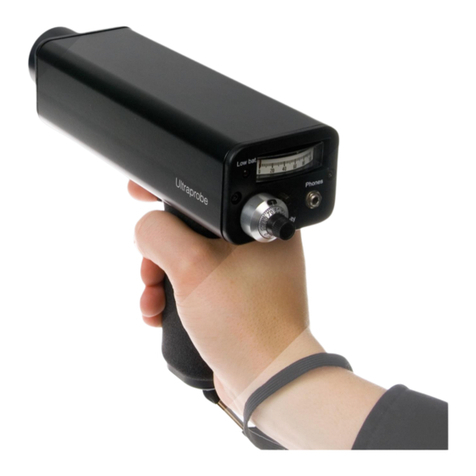
UE Systems
UE Systems ULTRAPROBE 2000 instruction manual
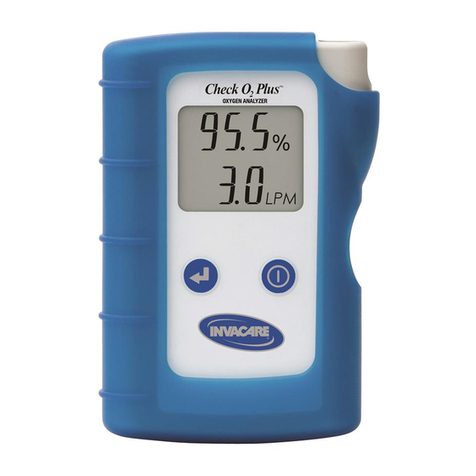
Invacare
Invacare IRC450 user manual
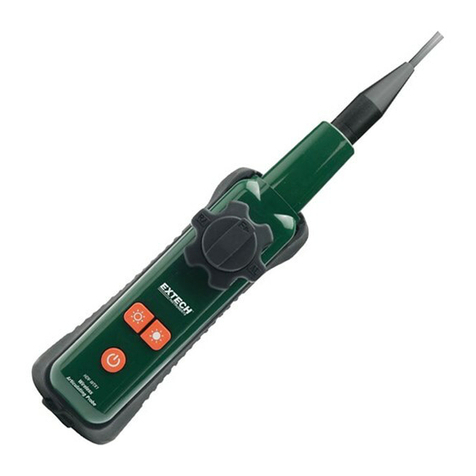
Extech Instruments
Extech Instruments HDV-WTX1L Product sheet
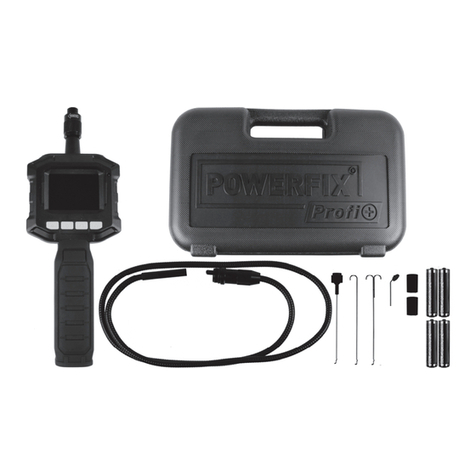
Powerfix Profi
Powerfix Profi PEK 2.3 A1 User manual and service information

Keysight
Keysight N5241AU-944 Installation notes
